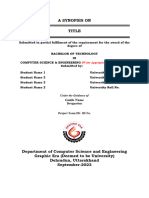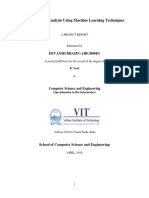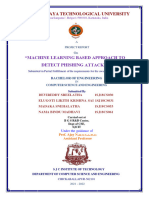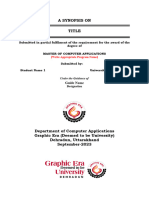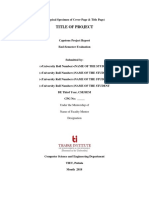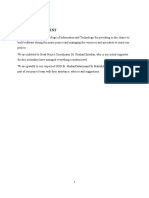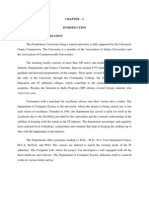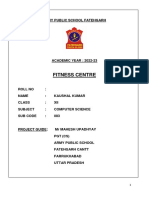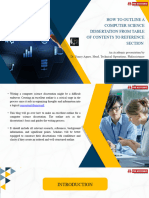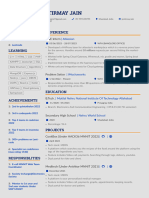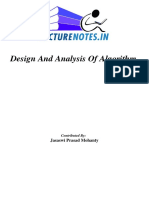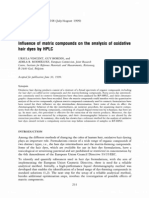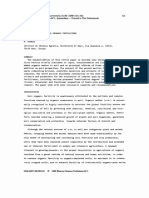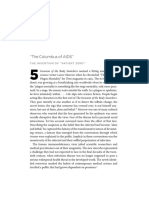0% found this document useful (0 votes)
173 views18 pagesComputer Science Project Report
This report summarizes a student project submitted to the Silicon Institute of Technology. It includes the student's name, their supervisor's name, and is submitted to fulfill the requirements for practice school. The report describes the objectives of the project, the methodology used, experimental results, and a conclusion. Key aspects covered include proposed methods to improve performance, the organization of the project, technologies used, results and discussion of sub-sections, and future scope.
Uploaded by
Prateek BharadwajCopyright
© © All Rights Reserved
We take content rights seriously. If you suspect this is your content, claim it here.
Available Formats
Download as DOCX, PDF, TXT or read online on Scribd
0% found this document useful (0 votes)
173 views18 pagesComputer Science Project Report
This report summarizes a student project submitted to the Silicon Institute of Technology. It includes the student's name, their supervisor's name, and is submitted to fulfill the requirements for practice school. The report describes the objectives of the project, the methodology used, experimental results, and a conclusion. Key aspects covered include proposed methods to improve performance, the organization of the project, technologies used, results and discussion of sub-sections, and future scope.
Uploaded by
Prateek BharadwajCopyright
© © All Rights Reserved
We take content rights seriously. If you suspect this is your content, claim it here.
Available Formats
Download as DOCX, PDF, TXT or read online on Scribd
/ 18






